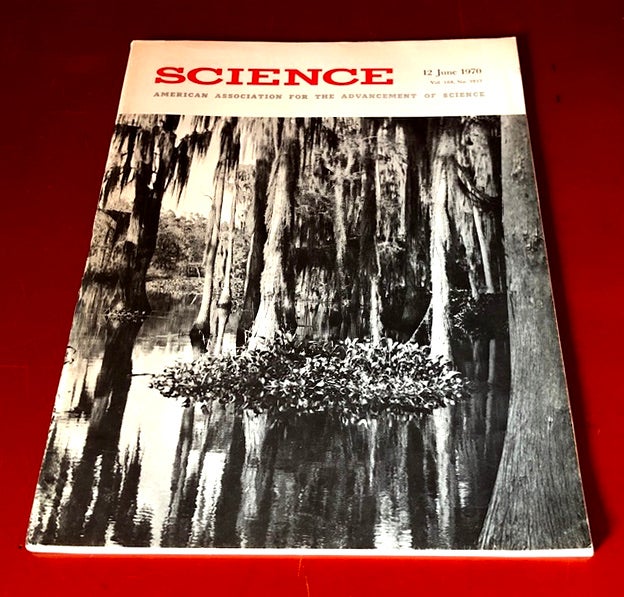Visibility of single atoms in Science 168, No. 3937, pp. 1338–1340, June 12, 1970
New York: AAAS, 1970. 1st Edition. FIRST EDITION OF THE FIRST PICTURES OF INDIVIDUAL ATOMS WITHIN A MOLECULAR STRUCTURE. Note that this paper includes those photographs. “Although individual atoms [had] been produced by field ion microscopes, there previously had been no way to reveal a single atom within a molecular structure” (Fling, First Photographs of a Single Atom, American Institute of Biological Sciences, 918, August 1970). Using a scanning transmission electron microscope (STEM) Albert Crewe made headlines around the world.
“In 1964 Crewe, a professor emeritus in physics at the University of Chicago and former director of Argonne National Laboratory, invented the scanning transmission electron microscope (STEM) based on a concept that came to him on an airplane trip. Crewe used focused beams of electrons instead of light waves for magnification. Because electron waves are thousands of times shorter than light waves, they can be used to resolve much smaller objects than can be seen through optical microscopes.
“The technique involved scanning a beam of electrons across an object or specimen. The electrons scattered from the structure in the specimen were then used to generate an image on an oscilloscope, which converts electrical impulses into pictures, much like a television set.
“He imaged single uranium and thorium atoms magnified a million times. Crewe's STEM was able to view samples smaller than five angstroms-about the distance between atoms. Atoms measure approximately one angstrom, or four-billionths of an inch, in diameter. Because atoms are smaller than a light wave, it is impossible to see them through an optical microscope regardless of its power.
“’Crewe’s STEM achieved much higher resolution than existing electron microscopes of the day. ‘The reason is that Crewe for the first time used a field emission electron source, effectively a point source of electrons, much smaller and brighter than any other electron source,’ said Riccardo Levi-Setti, Professor Emeritus in Physics at University of Chicago. ‘This enabled him to focus the scanning electron beam to a spot size of atomic dimensions. The field emission electron source is the key to his development’” (University of Chicago Obituary). Item #1234
CONDITION & DETAILS: New York: AAAS. Complete 1st edition in original pictorial wraps. 8vo. Discreet mailing label on rear wrap. Clean and bright. Near fine condition.
Price: $375.00

